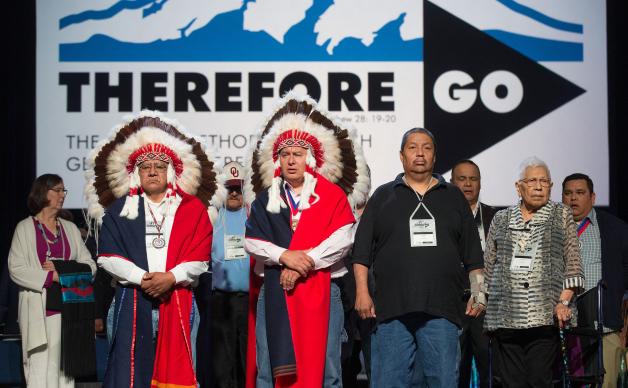Delegates to General Conference heard the truth about an historical tragedy with Methodist involvement.
SAM HODGES
United Methodist News Service
Concerns about legislation and the future of The United Methodist Church got set aside for a half-hour at General Conference 2016 on Thursday, May 18, as delegates focused instead on a historical tragedy with deep Methodist involvement.
The 1864 Sand Creek Massacre was the subject, and speakers included a historian and descendants of the Cheyenne and Arapaho Indian survivors of the attack.
Mountain Sky Area Bishop Elaine J.W. Stanovsky had joined the descendants in planning the event, the latest effort yet by The United Methodist Church to atone for the Sand Creek Massacre.
“We’re here to listen and to tell the truth,” Stanovsky told delegates.
The visiting Native Americans — some of them dressed in traditional clothing — voiced appreciation.
“We now extend our hand in friendship to the Methodist Church,” said William Walks Along, a Northern Cheyenne descendent of massacre survivors. “We have developed a measure of trust, respect and honor for each other.”
Leading up to General Conference 2016, historian Gary L. Roberts – who has studied the Sand Creek Massacre for decades – prepared a 173-page report titled “Remembering The Sand Creek Massacre: A Historical Review of Methodist Involvement, Influence, and Response.”
Roberts spoke to delegates on Thursday, calling his study of the Methodist involvement “sobering and challenging.”
Last Updated on December 28, 2022

